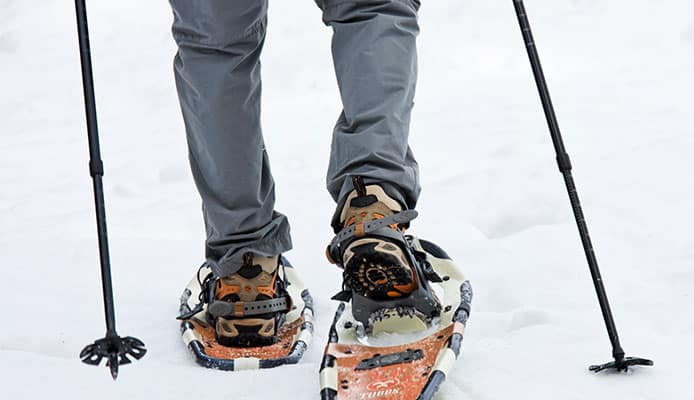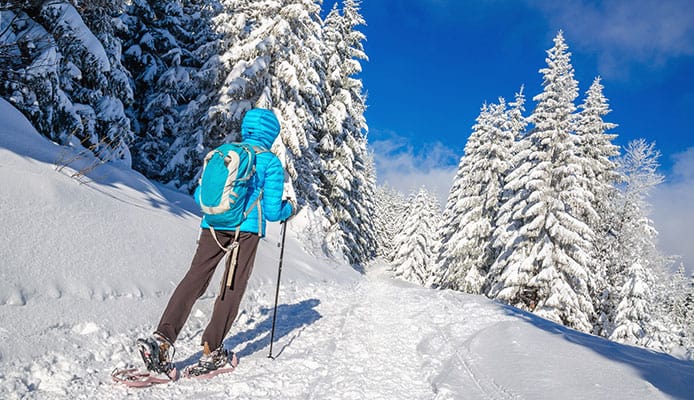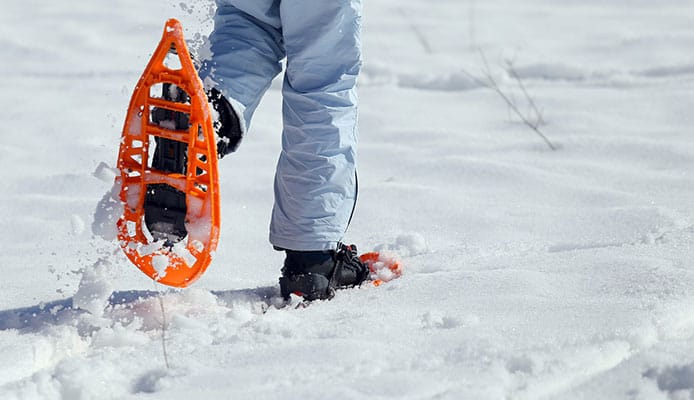
Over years, snowshoeing had been an interesting winter activity. Imagine the ability, to skim through snow without negative consequences, all thanks to the specially designed snowshoes boots. However, to be able to have the most comfort and effective working boots, special attention has to be taken in the detailing to achieve this.
Manufacturers have recently began to make boots ideal for this – taking into consideration the environment, body size and all other features that are important to achieving the best boots for snowshoeing. So whether you are hiking the snowy part of K2 or part of the after school snowshoeing club in your local high school, rest assured that you are covered.
Listed below are the 10 most recommended boots for snowshoeing, outlining their features and showcasing how manufactures have improved them so you can enjoy this indulging and healthy sport.
OUR TOP PICK
XPETI Thermator Men’s
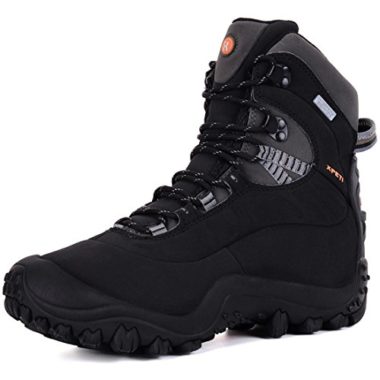
- Stand Out Features - Why We Love It
- Waterproof and hydroshield upper membrane to keep feet warm and dry
- Insulating ankle supporting thinsulate lining to keep feet warm up to --30 ℃
- Rubber toe cap for special feet protection
- High traction rubber soles and EVA midsoles
- Perfect to keep your feet warm
- Can be use in extreme cold and deep snow
Upper material: Waterproof fabric and synthetic fiber
Shaft: 8”, Mid-rise
Sole: Rubber
Ankle support: Yes
EDITORS CHOICE
Columbia Women’s
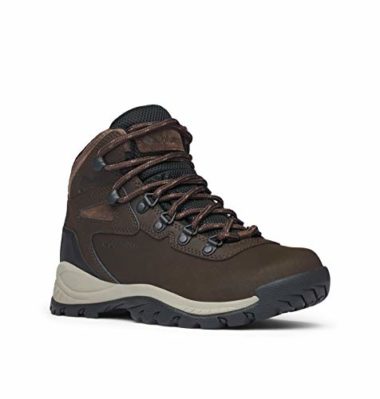
- Stand Out Features - Why We Love It
- Leather and mesh waterproof construction
- Light weight and supportive cushioning and rubber outsoles
- Light weight midsoles for comfort, cushioning and high energy return
- Hook and loop closure system
- Omni grip traction system
Upper material: Waterproof Suede leather
Shaft: 5.25”, Mid-rise
Sole: Rubber
Ankle support: Yes
BEST VALUE
Manfen Women’s
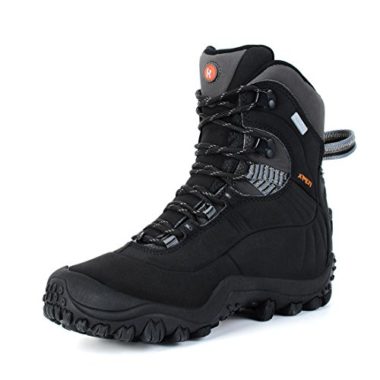
- Stand Out Features - Why We Love It
- Waterproof and breathable hydroguard sealed internal membrane for dry feet and comfort in all weather conditions
- Ankle high shaft with padded and toe cap protection for supportive protection, comfort and cushioning
- Skid proof EVA performance
- Anti-fatigue insoles
- Multifunctional and perfect for cold weather
Upper material: Waterproof fabric and synthetic fiber
Shaft: 8”, Mid-rise
Sole: Rubber
Ankle support: Yes
KEEN Women’s Revel III
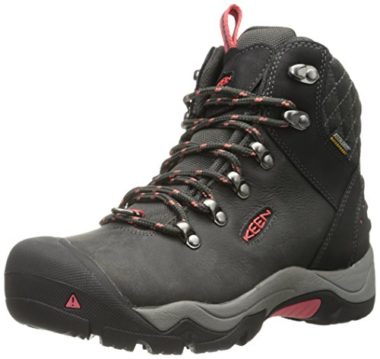
- Stand Out Features - Why We Love It
- 100% strong and waterproof leather upper sole
- Lace up adjustable closure with speed-hook eyelets and diamond-quilted collar
- KEEN dry breathable waterproof membrane
- 200g thick and warm insulation
- Tri-layer heat trapolator underfoot layered insulation system
- Grippy outsole traction system
- Can be use in extreme cold and deep snow
Upper material: Leather
Shaft: 5”, Mid-rise
Sole: Rubber
Ankle support: Yes
Salomon Men’s Quest 4D 2 GTX
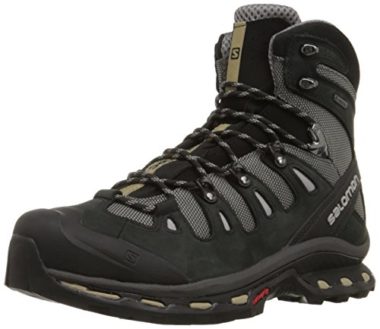
- Stand Out Features - Why We Love It
- High traction contra grip sole system
- Light weight at only 23 ounces for easy movement
- Rugged lace up and protective rubber toe cap design
- Gore-TEX waterproof and breathable membrane
- 4D chassis design for stability, control and comfort
- Molded EVA ortholite removable foot bed
- Perfect to keep your feet warm
Upper material: Waterproof Nubuck leather
Shaft: 6”, Mid-rise
Sole: Rubber
Ankle support: Yes
Columbia Men’s Bugaboot Plus III Omni
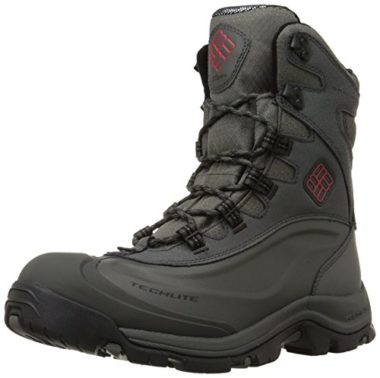
- Stand Out Features - Why We Love It
- Heat reflective thinsulate insulation offering protection of up to a temperature of -32 degrees Fahrenheit
- Techlite midsole for long lasting comfort, superior cushioning, and high energy return
- Midfoot soles for added support and enhanced torsional rigidity under feet
- Omni-Grip non-marking traction rubber outsole
- Cushioned EVA foot bed for supportive comfort.
Upper material: Waterproof leather, nylon and metal
Shaft: 7”, Mid-rise
Sole: Rubber
Ankle support: Yes
Merrell Men’s Moab Polar
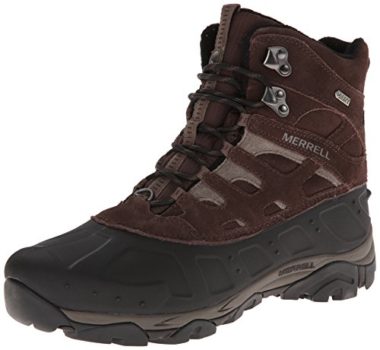
- Stand Out Features - Why We Love It
- Raised heel for optimum functionality on any terrain
- M-Select DRY treatment for maximum dryness of feet
- Molded EVA midsole and foot bed for comfort, superior cushioning and padding
- M-Select ICE GRIP outsole for high traction on any terrain or weather
Upper material: Waterproof leather
Shaft: 6.5”, Mid-rise
Sole: Rubber
Ankle support: Yes
Vasque Coldspark Ultradry Men’s
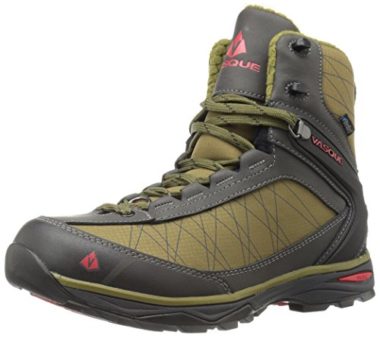
- Stand Out Features - Why We Love It
- 3M thinsulate insulation for heat trapping abilities
- Ultradry waterproofing system
- Cold hold dual density winter sole design for excellent traction
- EVA midsoles for reinforced agility
- TPU Midfoot inserts to stabilize under feet
- Fleece collar lining
- Gaiter d-rings
- Can be use in extreme cold and deep snow
Upper material: Synthetic fiber
Shaft: 5.75”, Mid-rise
Sole: Rubber
Ankle support: Yes
Baffin Men’s Impact
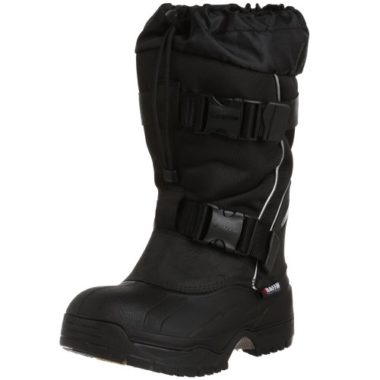
- Stand Out Features - Why We Love It
- Windproof upper nylon layer
- Bungee toggle snow collar and double buckles for full warming closure
- 8-layer removable inner lining for insulation of up to -148 degrees Fahrenheit
- Gelflex midsole for agility and stability
- Deep traction rubber outsoles
Upper material: Nylon and rubber
Shaft: Full-rise
Sole: Rubber
Ankle support: Yes
Merrell Women’s Polarand 8
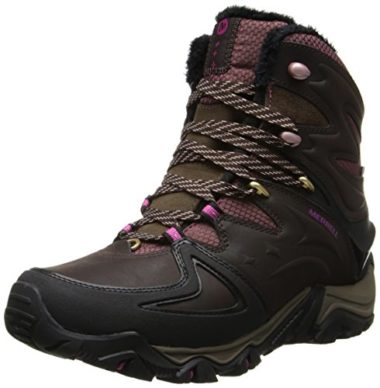
- Stand Out Features - Why We Love It
- Colorful feminine and athletic design
- M-select Dry waterproof technology for extra dry and moisture wicking properties
- 250g and 400g Thinsulate insulation at the tongue and toe cap for all day toasty warmth
- TPU molded heel for compatibility with snowshoe straps
- Grade 3 nylon insole for stability and protection
- EVA foam cushioned midsole for agility
Upper material: Leather and fabric
Shaft: Mid-rise
Sole: Rubber
Ankle support: Yes
How To Choose Boots For Snowshoeing – Buying Guide
Style
Style is an integral part of choosing your ideal winter boots. Depending on your preferences and how you will use your boots for snowshoeing, it’s an added value to mix style and functionality. It can be entirely for leisure when simply using your boots for day to day commute during winter times or have purchase camouflage design for when you go hunting or fishing to match with your gear.
Sole
Soles are probably one of the key features to look at when choosing the best boots for snowshoeing. If perfected, each comes with its advantage and this is exactly what you should be looking at in your next hiking boot purchase. Midsoles offer agility when in motion whilst the outer soles especially rubber fabricated ones offer great traction and anti-slip properties.
Terrain
It is important to understate the terrain that your snowshoe boots can handle. It’s ideal and cost-effective to purchase winter hiking boots that work well on multi-terrains ranging from icy mountains to snowy fields. Designs such as rubber traction sole systems that boat anti-skid and anti-slip properties offer the most adaptability on different terrains.
Water Resistance
This is another key feature to consider. However, do not make the mistake of confusing water resistance and waterproof. Water-resistant material will simply repel water such as rain splashes and prevent them from penetrating into the inside of your boot. Waterproof boots, however, prevent water from penetrating entirely even if you dip your boot into a water puddle. During the cold and wet season, it is better to invest in waterproof boots to avoid any risk of cold sickness such as hypothermia.
Durability
The durability of the material used also affects the functionality of the material. For example, imagine the use of strong rubber material on the soles, the rubber is highly durable as it can withstand wet and rough surfaces. In the end, you have material that is weatherproof but also long-lasting.
Material
The material used for the winter boots should be adaptable to the conditions. For example, the top outer part should ideally be waterproof leather or PVC to be able to repel water. Snowshoe boots that feature 3M Thinsulate insulation should also be favored because they boast heat preserving properties as well as moisture-wicking characteristics that keep feet toasty warm but also breathable and odor-free. Additionally, inner lining such as fleece further complements the boots’ warming and insulating abilities. For added comfort and functionality, materials such as EVA foam are perfect when used to fabricate midsoles.
Slip-proof
Look out for winter hiking boots that offer dependable and practical traction systems such as those made of rubber. These winter boots boast anti-slip and anti-skid qualities thanks to the carefully articulated design that helps boots securely grip rough, snowy, and icy terrains whilst allow you freedom and ease of movement.
Insulation
Insulation boosts the boots’ ability to internally trap heat produced by the body as well as repels outside cold air. Thick material such as 3M Thinsulate is favored for insulation, the higher the grams the more insulating the material is. Simply identify to what extent you want your winter hiking boots to be insulated whilst also considering the weight factor.
Traction
The best snowshoeing boots feature rubber traction systems. The rubber construction is sturdy enough to withstand rough and snowy surfaces whilst the ability to grip on the terrain makes the material the most favored one. If your boot has a midsole, that’s even better because it can support and distribute the weight you bear.
Weight
It is important to put weight in mind. Obviously, it is better to have lightweight winter boots but you don’t want to compromise quality. Thus, it is good to consider the feature that you are looking for and balance with the weight of your boots to complement each other – sort of like the Columbia Women’s Newton Ridge Boots.
Warmth
At the end of the day, it is highly vital to get waterproof boots that provide enough warmth – that’s what they are made from. Eon your shopping escapades, look out for boots with an insulated lining such as 3M Thinsulate and evaluate according to the level of warmth you want, do you want 250 g or 400g 3M Thinsulate insulation?- this is especially important to maintain the body’s temperature when out in the cold weather
You might also like: How To Attach Snowshoes To Backpack.
Support
Winter boots with insoles such as midsoles and EVA footbeds provide support by absorbing and distributing weight whilst also preventing strain from the feet due to their “absorbing” nature. This feature is especially highly important if you will be wearing the boots for a long time- say hiking a mountain.
Stability & Stiffness
The overall construction of your winter boots affects stability and stiffness. You want a sturdy and stiff outsole so that the boot is a lace-up design; your toes are not cut off from their circulation when trying to tie your binding straps. Additionally, a sturdy and stiff outer part of the boot prevents boot shifting.
Care and Maintenance
These snowshoes boots require minimal care and maintenance – at most wiping them clean with a cloth or a wet cloth. However, when they get wet on the inside immediately dry them to avoid fungi and bacteria build up as well as odor build-up. Additionally, you can stuff them with a shoe cushion or brown paper to absorb the moisture and dry the inside linings and soles.
Related Post: How To Dry Ski Boots
FAQs
Globo surf Overview
The boots for snowshoeing reviews have definitely proven how useful to have a pair it would be. The 10 best boots for snow shoeing listed above come with a cost cutting advantage of having winter boots that you can wear regularly on your errands as well as boots you can use in your sporting activities in the outdoors – be it ice fishing, snowboarding or hunting. Who wouldn’t want such a perk?
More Snow Shoes Reviews:


